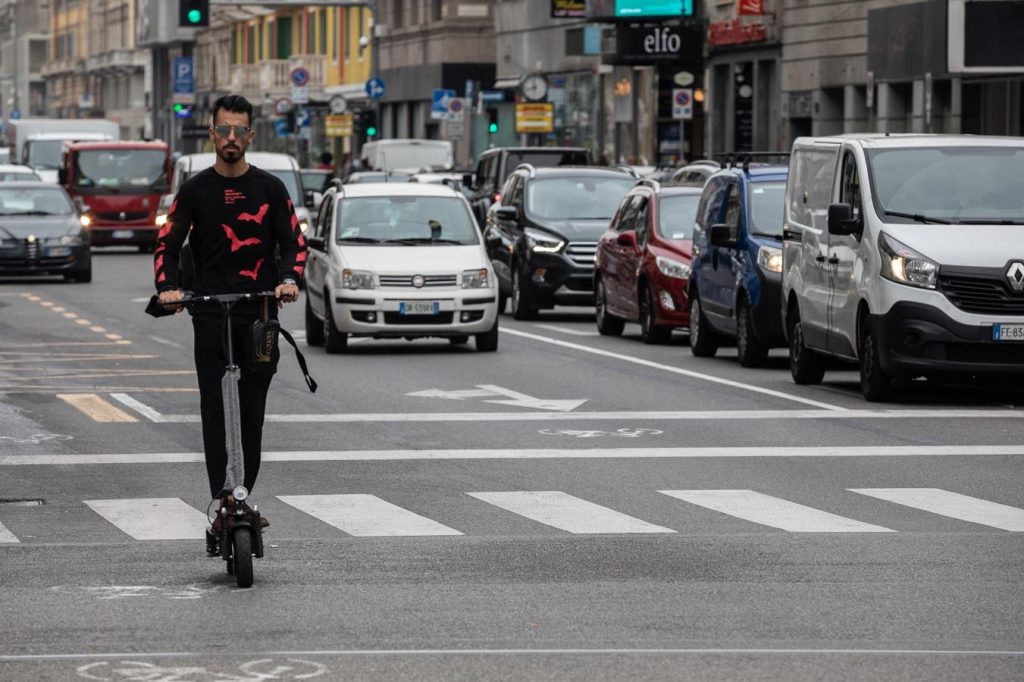Electric scooters (e-scooters) have proliferated in cities and towns in many countries of the world in recent years, which is great news. These newish forms of micro-mobility can contribute to reducing congestion, improving air quality and health, and creating a fun and inexpensive mode of transportation.
But the spike in use has also resulted in an increase in the number of crashes and serious injuries.
Unsafe and illegal e-scooter riding is linked to a lack of knowledge of the rules, a new study has found, and e-scooter users are less likely to ride dangerously or illegally if they know the rules and regulations.
The report, conducted by psychologists at Nottingham Trent University (NTU), will be published in the journal Accident Analysis & Prevention.
“Our studies have shown how a lack of awareness and understanding of the current e-scooter rules has a direct impact on riding behaviour, potentially leading to poor and illegal riding practices,” Petya Ventsislavova, lead researcher and senior lecturer at NTU’s School of Social Sciences, said in a statement. “This is exacerbated by the fact that e-scooter riders are generally younger, often around the age of 16 or without driving licenses and may have limited familiarity with traffic rules.”
The report, “E-scooters: Still the new kid on the transport block. Assessing e-scooter legislation knowledge and illegal riding behaviour,” which aims to raise awareness about safe riding practices, legal regulations, and call for better access to educational training programs to reduce collisions, is based on three research projects that assess the profile of e-scooter riders and non-riders, including self-reported riding habits and behavior, and understanding of current legislation.
The first study found that e-scooter riders were younger than non-riders, many were single, men were more likely to ride frequently, and most users – more than 50% – only rode for short distances. More than 50% of riders said they have ridden on pavements and with another person on board. Men reported using their phones and riding through red lights more often than women. Less than 15% of the participant riders said they wore a helmet.
Study two assessed riders and non-riders’ understanding of four key aspects of e-scooter regulations: bicycle lanes, e-scooter parking, speeding or adherence to speed limits, and riding on main roads. Riders were also asked how they would respond in each of the four categories.
Both rider and non-rider groups had little knowledge of the rules across all categories, researchers said, particularly regarding speed limits and designated parking areas. In addition, some participants assumed that they would be allowed to ride e-scooters on pavements.
For the third study, riders and non-riders were asked about how they would respond in 12 hypothetical scenarios on UK roads, whether they knew if each situation was legal, and if they would ride an e-scooter regardless of legality.
About 46% of riders reported that they would not participate in any illegal riding behaviors when they were aware of the rules, and just over that 9% of riders admitted they would still engage in illegal riding practices, even if they knew it was against the law.
Percentages were only slightly lower for non-riders: about 37% said they would follow the law if they were aware of it, and about 6% indicated they would engage in inappropriate riding behavior despite knowing it was against the rules.
“We see that riders who have better knowledge of the rules demonstrate more consistent and law-abiding behaviour,” Dr. Ventsislavova said, “which means that access to training programmes, raising awareness of the rules and promoting safer riding practices could ultimately reduce collisions.”
“Introducing these measures,” she added, “could also attract more users of different ages and move e-scooting from a mainly recreational activity to a legitimate mode of transport.”
For more information and to read the full report, click here and here.
Read the full article here










